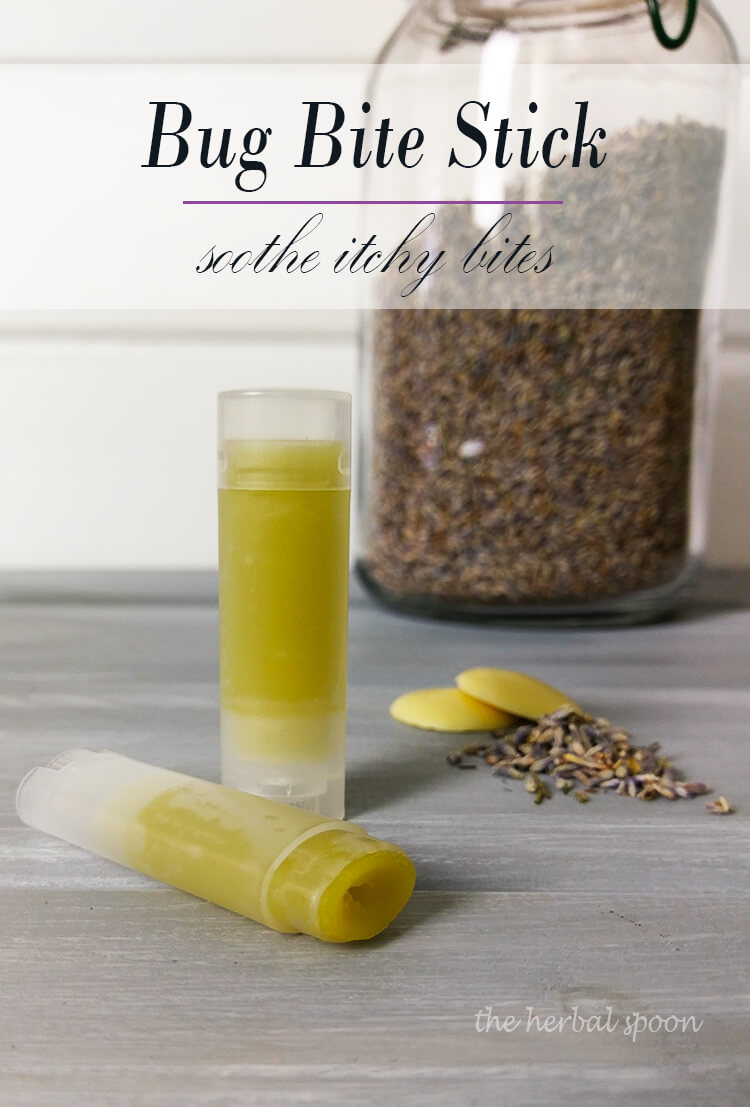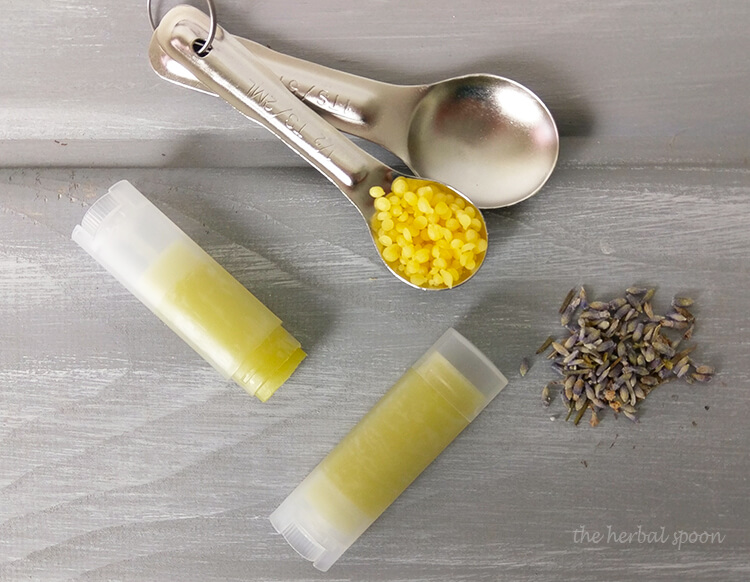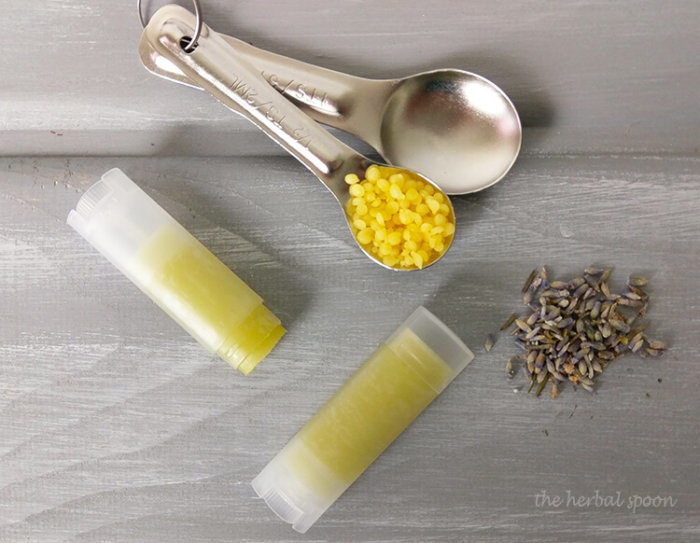 We use a lot of bug repellant lotion bars and bug repellant balm when summer hits. Sometimes a mosquito manages to get through and there’s an itchy bite to contend with. When that happens, these portable bug bite sticks offer soothing relief.
We use a lot of bug repellant lotion bars and bug repellant balm when summer hits. Sometimes a mosquito manages to get through and there’s an itchy bite to contend with. When that happens, these portable bug bite sticks offer soothing relief.
Anti-itch Essential Oils
Lavender and tea tree essential oil are very soothing to itchy, irritated skin. Even better they’re safe for kids. When dilutions are reduced in an attempt to be “safe,” it can sometimes be harmful instead … here’s why. A 41% dilution may seem like a lot of essential oil, but the recipe works best that way.
Whoa, is that safe??
Bug Bite Treatment for Babies
You may have heard that little ones need a .25% or a .5% essential oil dilution to be safe, but there’s more to the story. It depends on which oil you’re using, how much, what you’re using it for, the child’s health and body type, and their age. It’s important to remember that dose and dilution are NOT the same thing. If that sounds confusing, consider this.
Breaking Dose Down
If I used a .5% dilution of a harsh oil like peppermint in a head to toe body lotion, that’s a lot of essential oil absorbed into the skin. If however I’m using a 20% dilution of a gentle oil, like lavender as a spot treatment, then the dose is much less.
In scenario number one the child would have a total dose of 4 drops applied to the skin if we use 4 teaspoons of lotion. In scenario number two the dose of lavender essential oil in 1/16 teaspoon would be .002 drops. That’s a huge difference!
How to Use Essential Oils for Bug Bites
Both lavender and tea tree essential oil are generally safe to use occasionally as a spot treatment undiluted. I’ve tried to strike a middle ground here and use a total 40% essential oil dilution. I know it sounds like a lot, but the total amount of essential oil on the skin is low.
Treat Bug Bites that Are Swelling and Hot
Bug bites often feel itchy and inflamed, but mint essential oil has menthol that cools the skin. Peppermint is too harsh for infants respiratory systems and should not be applied directly to little one’s chests. The rules change when we’re talking about a spot treatment though.
How to Dilute Mint Essential Oil
Tisserand recommends using a .5% peppermint dilution on children ages 3-6, however that’s more for a product that’s applied all over the body, like lotion. Since this is a spot treatment I’ve used a 1% dilution. For adults it’s safe to use a 5% peppermint dilution all over the body. And 1% was the general dilution given in my Vintage Remedies pediatric course (now the Franklin Institute of Wellness) for babies.
Spearmint is gentler than peppermint so I prefer to use it with little ones. There aren’t any hard and fast rules here, but I’m comfortable using spearmint in this blend for ages 1 and older. If it’s for 3 and up then I’d use either spearmint or peppermint.
Extra Healing Tamanu
This sticky, green oil is thick and deeply nourishing to damaged skin. Tamanu is a nice addition to a soothing bug bite stick, but isn’t strictly required. It calms the itch, helps prevent infection, and reduces pain.
“With its unusual composition, tamanu oil absorbs deeply into all three layers of the skin, where it has been demonstrated to rapidly regenerate new skin, repair nerves, and diminish scarring… Open wounds and serious breaches of the body have reportedly been repaired with treatment with the oil. It is anti-inflammatory, anti-bacterial, and analgesic, while being non-toxic and non-irritating.” – Parker
A Note on Measuring Ingredients
I figured this formula in millileters so it would be an accurate dilution ratio for the essential oils. I use these dropper pipettes to measure carrier oils (like tamanu) and essential oils. Not everyone has containers that measure in millileters so I’ve also included directions for measuring spoons.
If you opt to use measuring spoons the recipe won’t be quite as accurate. Droppers aren’t so helpful when it comes to beeswax though so I stuck with teaspoons here.

Bug Bite Relief Stick
Ingredients:
Yields about 4 bug bite relief sticks
- 4.8 ml, 1 scant teaspoon tea tree essential oil
- 4.8 ml, 1 scant teaspoon lavender essential oil
- 1 and 1/2 teaspoons beeswax pellets
- 2 cocoa butter wafers, or 1 teaspoon
- 2.5 ml, ½ tsp tamanu oil or sweet almond oil
- 4 drops spearmint OR peppermint essential oil
- Heat safe glass jar (an 8 ounce mason jar or a small glass measuring cup with a spout work well)
- Pot
- Cooking strainer
- Lip balm tubes .15 oz – get them here
Directions:
- In a small, heat safe glass jar add the beeswax, shea butter and grapeseed or tamanu oil. Place the strainer in the pot, then put the jar on the strainer. Add enough water to the pot so it comes about 1/3 of the way up the jar.
- Turn the heat to medium and allow the mixture to melt completely, stirring occasionally with a metal spoon.
- Once the wax and shea butter are melted, add the essential oils, stir a little and turn off the heat.
- Immediately pour the balm into your lip balm tubes. The mixture will harden quickly, so place it back in the water to soften if needed.
To use: Apply as needed to soothe itchy bug bites. Keep the balm away from direct sunlight and store in a cool place.
- I’ve found that a glass container with a small spout works best to pour into the tiny tubes. I’ve used a Pyrex glass measuring cup before, but my favorite tool for this is a glass beaker.
- If you don’t want to mess with lip balm tubes then this could be put into a 1 ounce metal tin instead. The balm may be a little tougher to get out though.
References:
Parker, Susan M. (2015). Power of the Seed: Your Guide to Oils for Health & Beauty (Process Self-reliance Series). Process. Kindle Edition.

Hello there, I am new to your site and I like what I am seeing. I am trying to use for essential oils. I like your bug bite relief stick idea. I have a question for you. If you wanted to add something to the mix to change the color do you feel that would be okay… I am trying to think what could be used for color that would still keep it natural.
Thanks for your comment 🙂 You could add color if you wanted but since this recipe is specifically to heal the skin colorant might inhibit that, but I’m not sure. Mica would add sparkle but not color, ultramarines are “nature identical” but synthetic and I’m not a fan of the other synthetic colorants approved for cosmetic use. You could add alkanet infused oil to give it a maroon hue, but I wouldn’t use alkanet on broken skin like a bite. Colorants are nice for lip balm, makeup, bath bombs and the like but I’m not sure they’d be beneficial in a skincare product specifically made for damaged skin. Hope that helps!